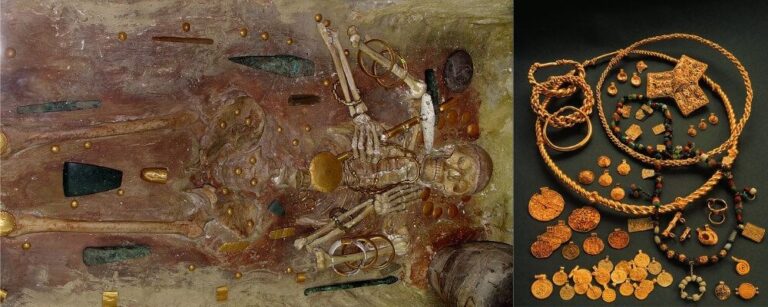We know that the Vikings believed in life after death. What exactly they believed it looked like is unclear.
While surviving sources provide descriptions of Valhalla, Odin’s hall in Asgard for brave fallen warriors, Helheim, the underworld, and other afterlives, these were written by Christian observers of Norse culture and were highly influenced by Christian ideas.
But we know from Viking burial customs that the Norsemen believed that the afterlife looked a lot like the current one, and that people would need many of the same things that they used in this life.
That is why items of importance were buried with them.
Let’s take a look at the eclectic collection of goods found in a double grave uncovered in Norway just last year, and then at some of the most interesting grave goods discovered across the Viking world.
Setesdal Burial Find
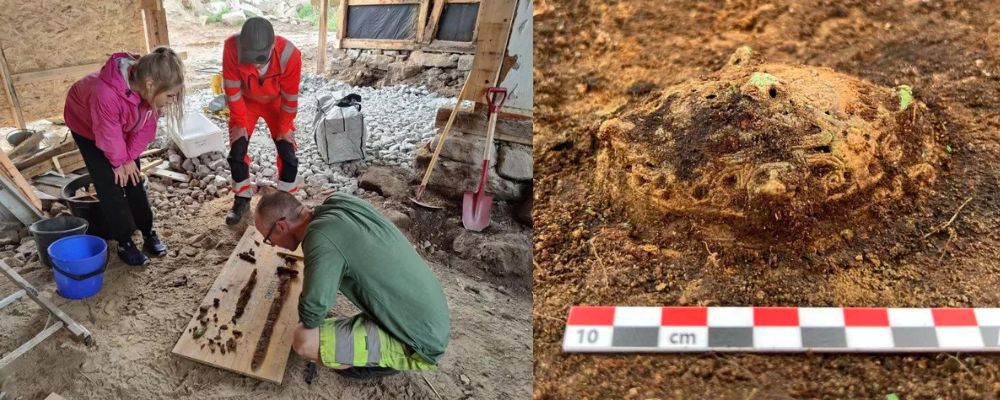
In 2023, a local man called Heiland discovered something strange in his garden in Setesdal in Southern Norway.
Little did he know that he had just made one of the most important Viking archaeological discoveries of recent years.
Heiland initially found a Viking age sword, a lance, pieces of a brooch, and gilded beads. Realizing that this could be something important, he contacted the municipal authorities.
When the archaeologists arrived, they found much more.
They uncovered a Viking-style axe, the metal boss of a roundshield, and what appears to be several knives.
Together with the lance and sword initially uncovered, this makes up a complete set of weapons for a Viking warrior.
The excavators also found a lot more jewelry. They found hundreds of beads that look like they belong to multiple necklaces and a variety of brooches.
Four of the brooches found were the oval-style brooches used to fasten clothing in the Viking age, by both men and women.
Some of the jewelry seems to have been buried in a wooden jewelry box that was once elaborately adorned, similar to one found in the Oseberg ship burial, also from Viking age Norway.
While this was clearly a burial, no bones were found probably due to the practice of cremation and subsequent natural breakdown.
But despite lacking this crucial evidence, archaeologists suspect that this was a double grave, probably of a man and his wife.
They were also buried with tools they would have used in life. The grave revealed a sickle for farming, a frying pan, and spindle whorls for spinning.
While this grave seems to present a rich set of grave goods, this is because they are well preserved.
Other graves found in the area of Southern Norway also contained weapons and jewelry, suggesting that they were common grave goods in this corner of the Viking world.
Viking Grave Treasures
While the Setesdal burial is rich for the number of goods it contains and confirm that pattern that these were common grave goods, some fascinating and unexpected things have also been found in Vikings graves.
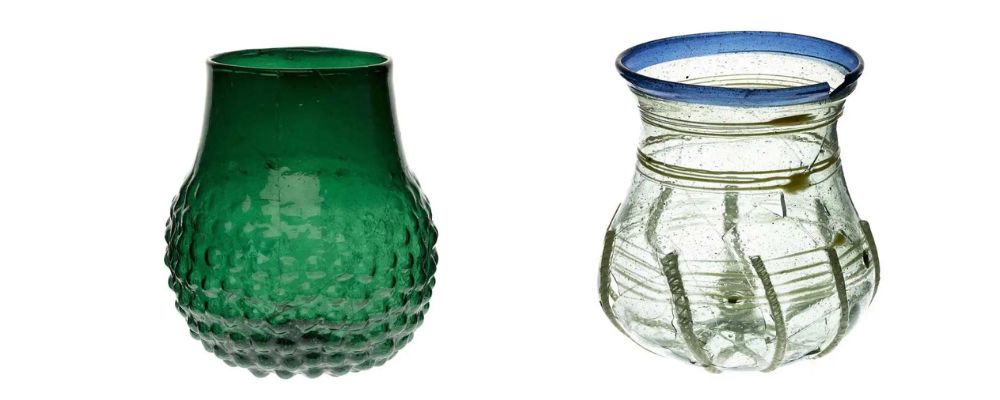
Birka is a famous settlement from Viking-age Sweden which was a trading and manufacturing center.
A variety of graves have been excavated in the area and they contain some unexpected imported luxury goods, specifically glass vessels.
Glassware was expensive and challenging to make at the time and was not common in the Viking world.
These items seem to have been imported from France through trade.
Coins
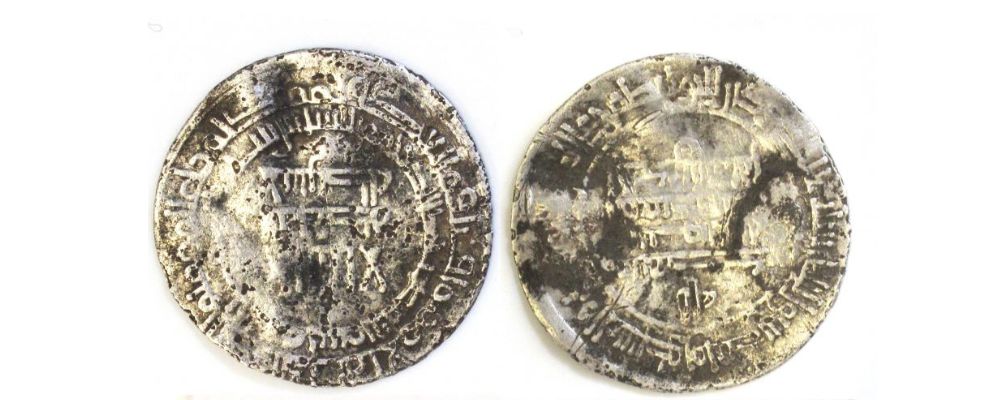
The Vikings only started using coins as currency in around 1000 BC, but they were aware of coins from other cultures. They would often hold onto coins as luxury goods and turn them into pendant jewelry.
In the pre-Viking age the Norse ancestors also minted medallions inspired by Roman coinage.
Just over 1,000 graves were excavated at Bjorko in Sweden and 120 of those graves contained coins.
They came from all over the world, but most came from the Middle East, confirming trade between the Vikings and the East.
These coins are estimated to pre-date Viking coinage by about 200 years.
Buddhas
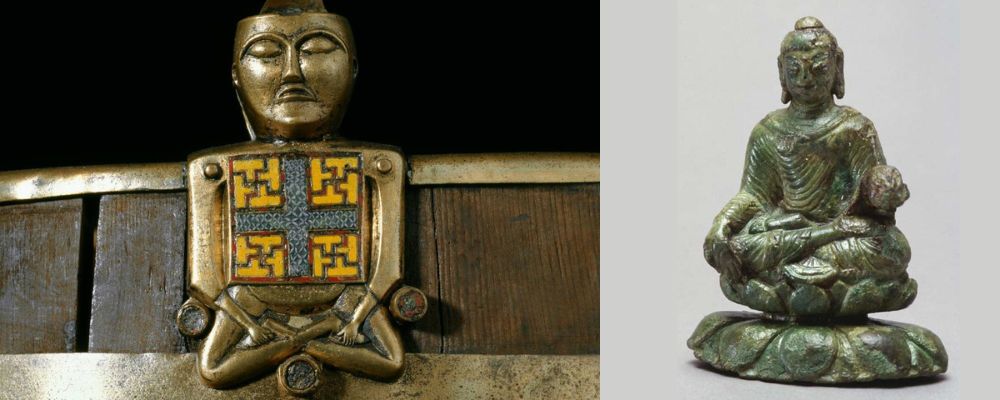
Also confirming contact with the Far East, objects depicting the Buddha have also been found among Viking grave goods.
A small Buddha statue was found in a Swedish Viking grave from early in the period.
The rich and prestigious of Oseberg ship burial from Norway, which contained the body of two important women and dates to around 834 CE, contained an elaborate wooden bucket, that seems to have been made in Ireland, which has three gold bands and intricate handles that depict two men sitting cross-legged, suggestive of the Buddha.
Whale Bone Plaque
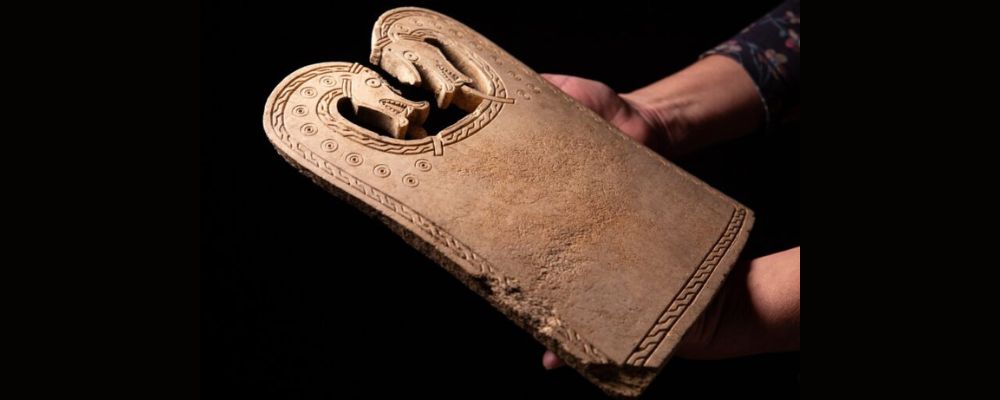
This elaborate whale bone plaque was found in a Viking grave on the island of Orkney and seems to have belonged to an old woman, over 70 years old, which was impressive in such a difficult time.
The plaque has an elaborate design with Viking-style serpent heads and was used for working linen.
Textile working was considered important among the Vikings and this woman was probably considered an artist within her community.
Gaming Set
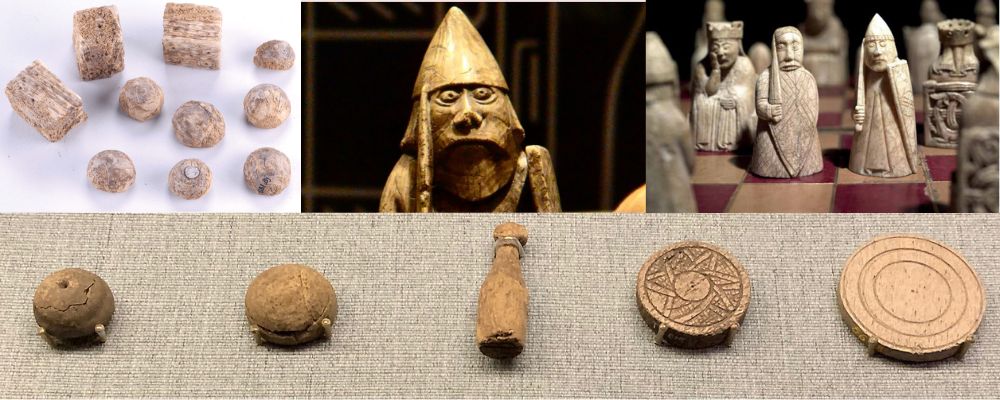
A female warrior buried at Brika was found with a full set of weapons and war horses, which is already unusual for a woman.
But she also had another interesting thing in her grave, a gaming set.
There is good evidence that the Vikings enjoyed games of strategy, games similar to Chess and Go.
She had a fairly basic set, but an elaborate chess set has been found in Viking Scotland on the Isle of Lewis with 92 pieces made from ivory walrus tusk.
While other game pieces have been found in several Viking burial sites, the Scottish chess set does not appear to have been a grave good.
Drugs
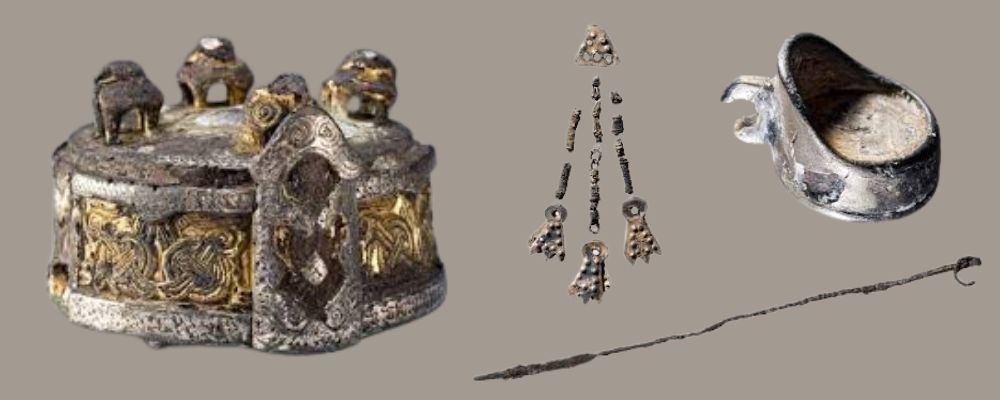
Natural mind-altering substances have been used throughout history, and the Vikings were no exception.
They even took it into the next life.
A woman buried at Fyrkat is believed to have been a Volva, a Viking witch.
She was buried with a number of unusual objects that appear to have been tools of her trade including a wand and toe rings.
But one of the most interesting things found in her grave was a small pouch containing henbane seeds, which can cause hallucinations and euphoria.
It may have been something that she used to prepare for contact with the spirit world.
Common Viking Grave Goods
What are some other grave goods that were common in Viking burials ?
Combs were extremely common, verifying the legend that the Vikings were particular about their hygiene, enough so to draw criticism from many of their neighbors.
Thor’s hammer pendants were also a very common grave good.
It is believed that people wore them for protection in life, and it was a personal piece that followed them to the grave.
We’ve already seen brooches, beads, and weapons, and horses and dogs also seem to have been slain and buried with their masters quite frequently.
Even though it was common to cremate bodies in pre-Christian Scandinavia, iit is clear that the Vikings believed that you could take it with you.
